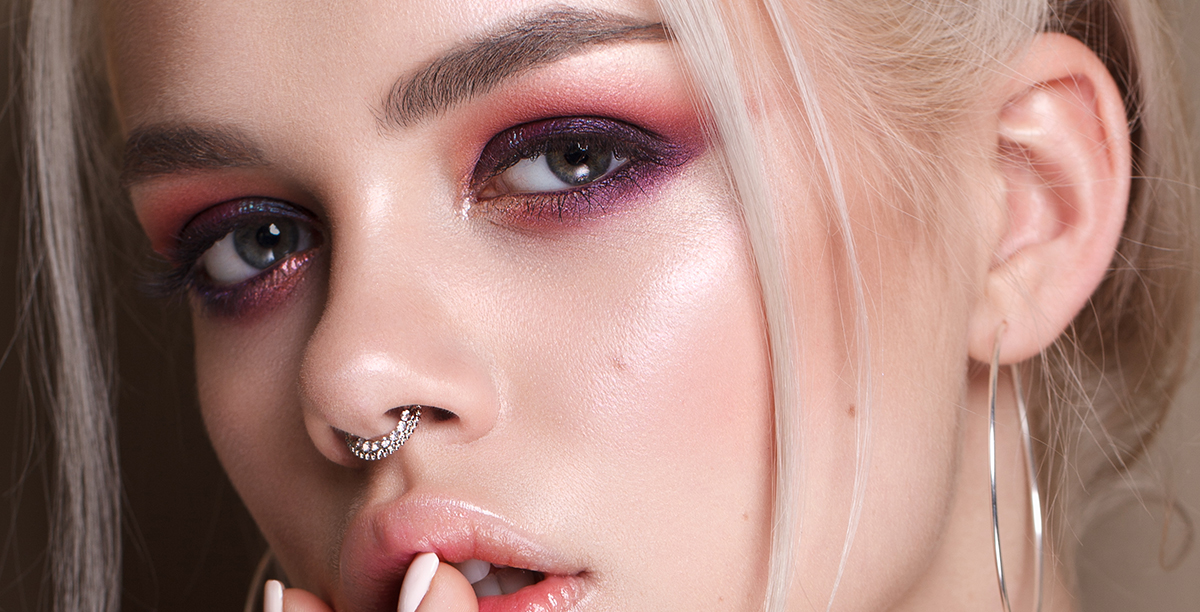Septum piercings have grown in popularity over recent years, becoming a stylish statement for many. While these piercings are undeniably cool, one common concern is the level of pain associated with getting one. This article will provide a comprehensive guide on septum piercing pain, covering what to expect during the procedure, how to manage the discomfort, and tips for a smooth healing process.
What Is a Septum Piercing?
A septum piercing is a type of body modification where a small hole is made through the thin wall of cartilage that separates the nostrils, known as the nasal septum. Unlike nostril piercings, which go through the fleshy part of the nose, septum piercings pass through a more delicate area. This area, often referred to as the “sweet spot,” is a small piece of flesh just below the cartilage, making it less painful than one might initially think.
The Pain Scale: How Painful Is a Septum Piercing?
Comparing Septum Piercing Pain to Other Piercings
When discussing septum piercing pain, it’s helpful to compare it to other types of piercings. For many people, septum piercings are less painful than nostril piercings, as they go through softer tissue rather than cartilage. On a pain scale of 1 to 10, where 10 is the most painful, many describe septum piercing pain as a 4 or 5. This makes it moderately uncomfortable but generally tolerable.
Factors That Influence Septum Piercing Pain
Pain is subjective and can vary from person to person based on several factors:
- Pain Tolerance: Some people naturally have a higher pain threshold, meaning they may find the procedure less painful than others.
- Piercer’s Skill: A skilled and experienced piercer will perform the procedure quickly and accurately, minimizing pain.
- Anatomy: Everyone’s nasal anatomy is different. If the “sweet spot” is easily accessible, the piercing will likely be less painful. However, if the piercer needs to navigate around cartilage, it may cause more discomfort.
- Mindset: Anxiety and stress can amplify the perception of pain. Going into the procedure with a calm and positive mindset can help reduce the sensation.
Immediate Pain During the Procedure
The actual piercing process is relatively quick, usually lasting just a few seconds. You’ll feel a sharp pinch as the needle goes through the septum, followed by a brief moment of discomfort as the jewelry is inserted. For most people, the pain is intense but fleeting.
Aftercare Pain and Discomfort
The pain doesn’t necessarily end once the piercing is done. For the first few days, it’s normal to experience some soreness, swelling, and tenderness around the piercing site. This is your body’s natural response to the trauma of the procedure. The level of discomfort varies, but it’s generally manageable with proper care. Also read here: Are Grey Eyes Rare? Unveiling the Mystery Behind This Unique Eye Color
Managing Septum Piercing Pain: Before, During, and After
Preparing for the Piercing
To minimize septum piercing pain, preparation is key. Here are some tips to help you get ready:
- Choose a Reputable Piercer: Research piercers in your area and read reviews to find someone with a good reputation. An experienced piercer will know how to perform the procedure with minimal pain.
- Stay Hydrated and Nourished: Eating a good meal and staying hydrated before your appointment can help stabilize your blood sugar and reduce the likelihood of feeling faint or dizzy during the piercing.
- Avoid Alcohol and Blood Thinners: Refrain from drinking alcohol or taking blood-thinning medications (like aspirin) before your appointment, as these can increase bleeding and swelling.
- Relax: Try to remain calm and composed. Deep breathing exercises or meditation can help ease anxiety.
During the Piercing
During the piercing, follow these guidelines to manage pain:
- Breathe Deeply: Take slow, deep breaths throughout the procedure. This will help you stay calm and focused, making the pain more bearable.
- Follow the Piercer’s Instructions: Listen carefully to your piercer’s guidance. They might ask you to take a deep breath just before they insert the needle, which can help distract you from the pain.
- Stay Still: Try not to move during the procedure. Sudden movements can make the experience more painful and may affect the placement of the piercing.
Aftercare Tips to Reduce Pain and Promote Healing
Proper aftercare is crucial for reducing pain and ensuring a smooth healing process:
- Clean the Piercing Regularly: Use a saline solution to clean the piercing twice daily. This helps prevent infection and reduces swelling and discomfort.
- Avoid Touching the Piercing: Refrain from touching, twisting, or playing with the jewelry, as this can cause irritation and prolong healing.
- Sleep on Your Back: If possible, sleep on your back to avoid putting pressure on your nose, which can exacerbate pain and swelling.
- Be Gentle with Your Nose: Avoid activities that could bump or hit your nose, such as sports or roughhousing, as this can be extremely painful and potentially damage the piercing.
Common Issues Related to Septum Piercing Pain
Swelling and Bruising
Swelling and bruising are common after a septum piercing. While this is a normal part of the healing process, excessive swelling or bruising could indicate an issue. To reduce swelling, you can apply a cold compress to the area, but be sure not to put direct pressure on the piercing.
Infections and How They Increase Pain
Infections are a serious concern with any piercing and can significantly increase pain. Signs of infection include redness, severe swelling, throbbing pain, and pus discharge. If you suspect an infection, seek medical advice immediately. Early intervention can prevent more severe complications and alleviate the associated pain.
Septum Piercing Bumps
Sometimes, small bumps can form around the piercing site. These bumps are often a result of irritation, improper aftercare, or minor infections. They can be painful and unsightly but are usually treatable with proper care. Saline soaks and avoiding touching the piercing can help these bumps heal.
Septum Piercing Rejection and Migration
Although rare, rejection and migration can occur with septum piercings. This happens when the body pushes the jewelry out, treating it as a foreign object. If this occurs, you may experience increased pain, and the piercing may appear to move from its original location. If you notice signs of rejection or migration, consult your piercer for advice on what steps to take next.
Long-Term Considerations: Living with a Septum Piercing
Adjusting to the Piercing
Once the initial pain subsides, you’ll likely become accustomed to your new septum piercing. However, you may still experience occasional discomfort, especially when changing jewelry or if the piercing gets bumped. Over time, these instances should become less frequent as the piercing fully heals.
Pain During Jewelry Changes
Changing septum jewelry can be a bit uncomfortable, especially if the piercing isn’t fully healed. It’s advisable to wait until the piercing is completely healed (typically 6-8 weeks) before attempting to change the jewelry. If you’re unsure, consult your piercer for guidance. Using high-quality jewelry and applying a lubricant like saline solution can help make the process smoother and less painful.
Allergic Reactions and Material Sensitivity
Some people may experience allergic reactions to certain metals used in septum jewelry, leading to irritation, swelling, and pain. It’s essential to use hypoallergenic materials like surgical steel, titanium, or gold to avoid these issues. If you suspect an allergic reaction, switch to a different type of jewelry and consult your piercer.
How Long Does the Pain Last?
Immediate Pain vs. Healing Pain
Immediate pain during the septum piercing process is sharp and brief. The healing pain is more of a dull ache that can last for a few days to a week. Swelling and tenderness usually peak within the first 48 hours and gradually subside as the healing process progresses.
When to Seek Help for Prolonged Pain
If you experience pain that persists beyond a few weeks, or if the pain intensifies rather than diminishes, it may indicate a problem. This could be due to an infection, improper placement, or an allergic reaction. In such cases, it’s crucial to seek advice from a professional piercer or healthcare provider to determine the cause and appropriate treatment.
The Psychological Aspect of Septum Piercing Pain
Fear and Anxiety Before the Procedure
Many people experience fear or anxiety before getting a septum piercing, which can heighten their perception of pain. Understanding the process, knowing what to expect, and mentally preparing can significantly reduce these feelings. Some people find it helpful to talk to others who have had septum piercings or to watch videos of the procedure to demystify the experience.
Pain vs. Satisfaction: Was It Worth It?
Despite the pain, many people find that the satisfaction of having a septum piercing far outweighs the discomfort experienced during the process. The piercing becomes a unique part of their identity and a form of self-expression. For most, the pain is a temporary hurdle in achieving a long-term aesthetic goal.
Coping Mechanisms for Pain
Developing coping mechanisms for pain can make the experience more manageable. Deep breathing, focusing on positive thoughts, and even listening to music during the procedure can help distract from the pain. After the piercing, staying occupied with activities that keep your mind off the discomfort can make the healing period feel shorter.
Conclusion: Embracing the Pain for a Unique Piercing
Septum piercing pain is a significant consideration for anyone thinking about getting this type of body modification. While the pain is real, it’s generally manageable and short-lived, especially with proper preparation and aftercare. By understanding what to expect, how to manage the discomfort, and how to
care for the piercing post-procedure, you can make the experience as smooth and pain-free as possible.
For those willing to endure a bit of pain for the sake of a unique and stylish piercing, the septum piercing can be a rewarding choice. Remember, pain is a natural part of the process, but with the right mindset and care, it doesn’t have to be an overwhelming one. Whether you’re getting your first septum piercing or adding to an existing collection, embracing the experience with confidence will make it all the more worthwhile.










